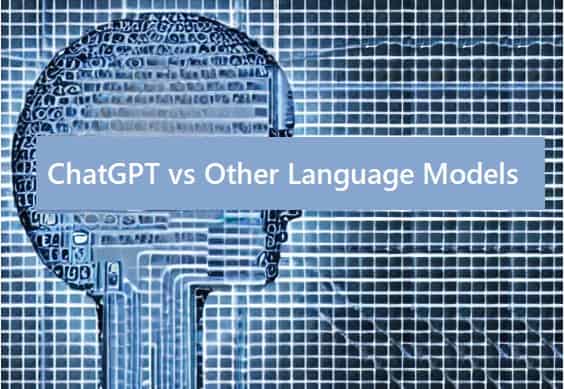ChatGPT is a transformer-based language model developed by OpenAI that has shown remarkable proficiency in generating human-like text. The model has been trained on a massive corpus of text data, making it capable of generating coherent and context-aware responses to a wide range of queries.
However, ChatGPT is not the only language model available. There are several other language models that have been developed by different organizations and researchers, each with its strengths and weaknesses. In this article, we will compare ChatGPT with some of the most widely used language models.
- GPT-3: GPT-3 is another transformer-based language model developed by OpenAI. It is a much larger model than ChatGPT, with over 175 billion parameters, making it the largest language model to date. GPT-3 is capable of performing a wide range of tasks, from language translation to content creation, making it a valuable tool for various applications. However, it requires significant computational resources to run, making it less accessible to individuals and smaller organizations.
- BERT: BERT (Bidirectional Encoder Representations from Transformers) is a transformer-based language model developed by Google that has shown remarkable proficiency in NLP tasks, such as named entity recognition and sentiment analysis. Unlike ChatGPT and GPT-3, BERT is trained on a task-specific objective, making it more focused and specialized in a particular task.
- ELMo: ELMo (Embeddings from Language Models) is a language model developed by researchers at the University of Washington that uses deep contextualized word representations to improve NLP tasks. ELMo is trained on a wide range of tasks and uses a bi-directional LSTM architecture, making it a valuable tool for various NLP tasks.
- ULMFiT: ULMFiT (Universal Language Model Fine-tuning) is a language model developed by researchers at fast.ai that uses transfer learning to fine-tune pre-trained language models on specific tasks. ULMFiT has shown remarkable proficiency in NLP tasks, such as text classification and sentiment analysis, making it a valuable tool for various applications.
In conclusion, ChatGPT is a powerful language model that has shown remarkable proficiency in generating human-like text. However, it is not the only language model available, and each model has its strengths and weaknesses.
The choice of language model will depend on the specific task and resources available, but each of these models has the potential to revolutionize the way we interact with technology and provide us with more natural and human-like experiences.
